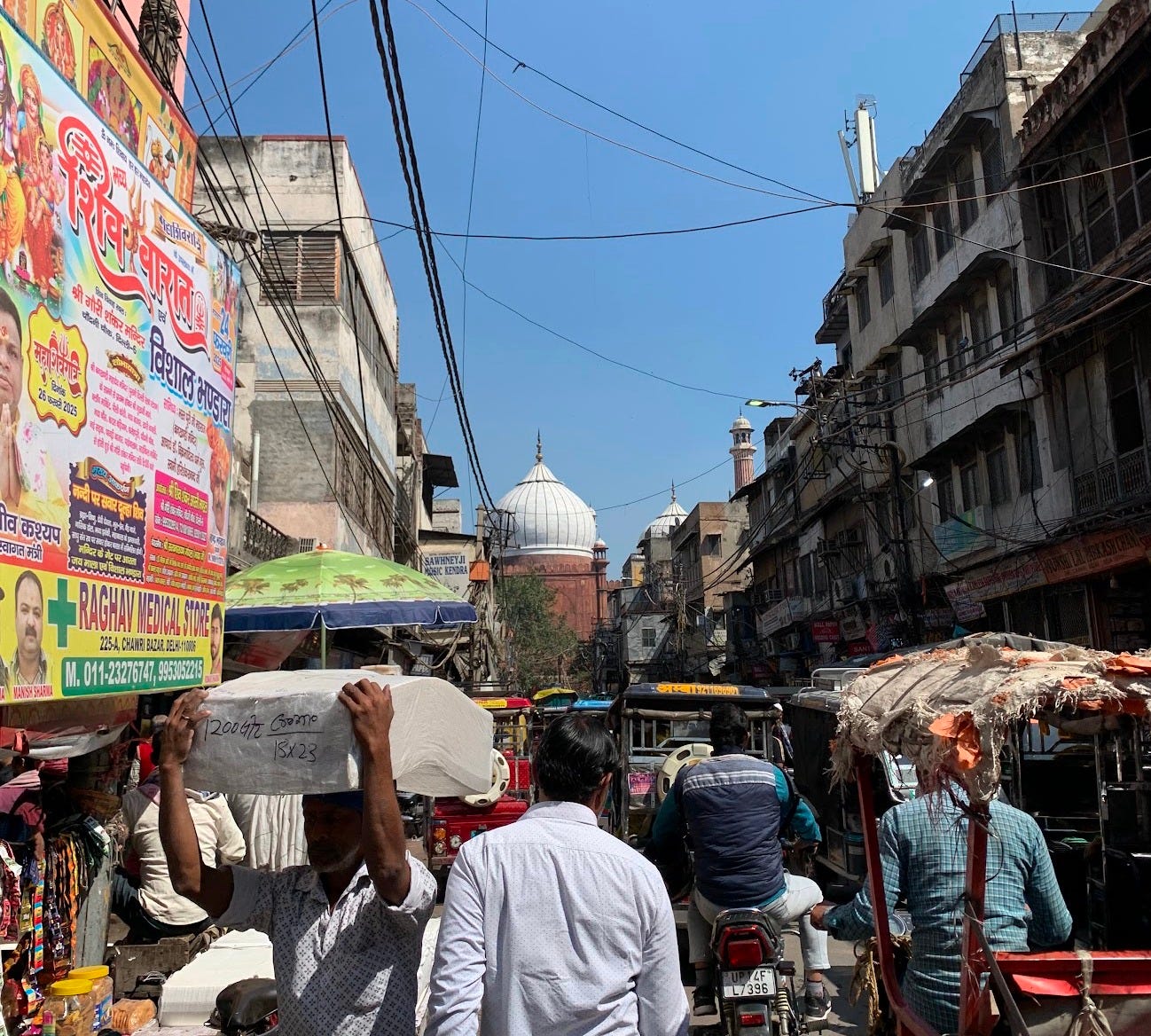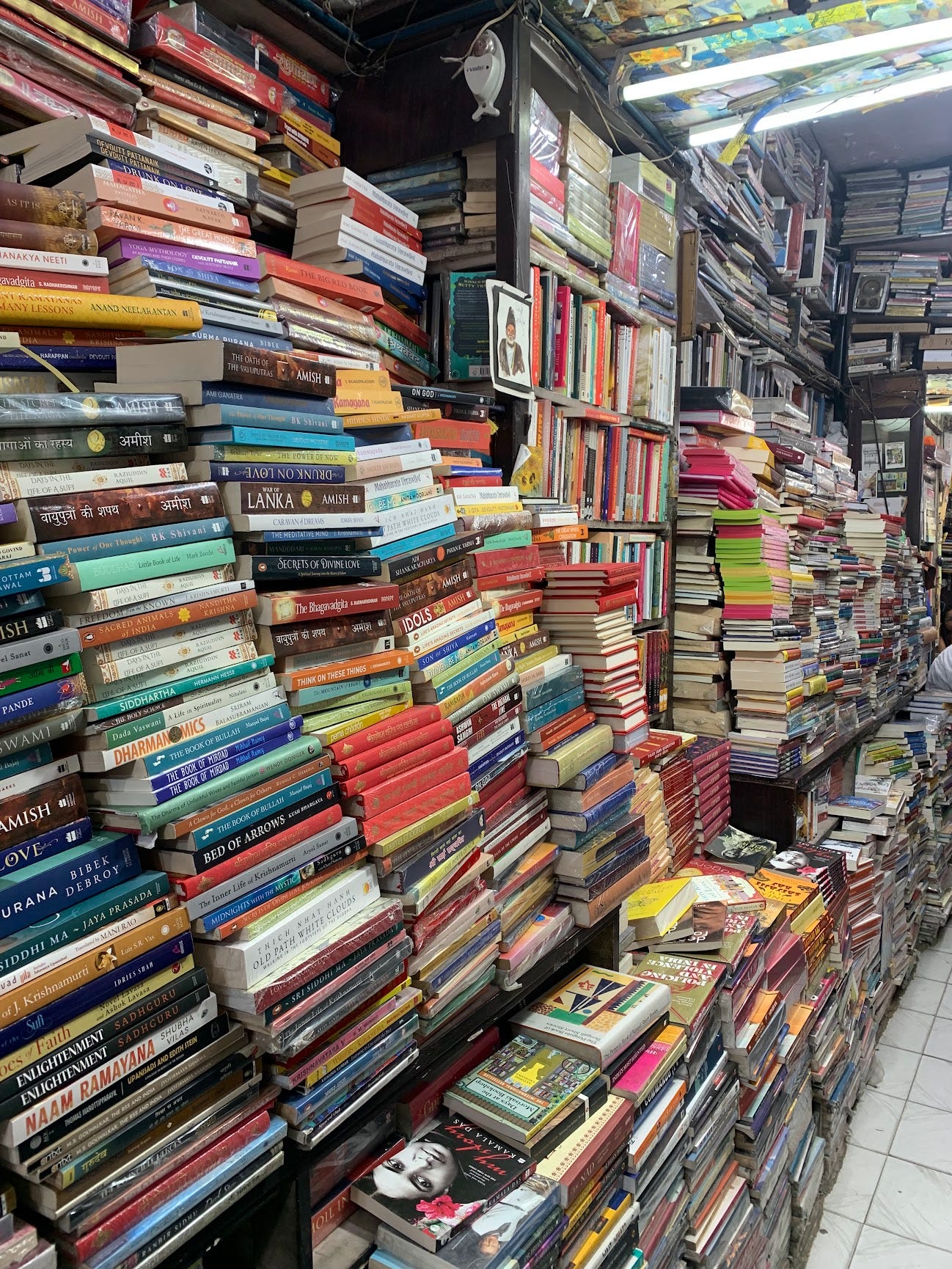Delhi’s got a grip on me I can’t explain. It’s a city that drags you in, kicks you around, and leaves you wanting more, like a fight you don’t know why you’re picking. It’s the chaos that hooks me, the way it’s too much and just enough all at once. I was here early March, and it’s still rattling in my chest, the noise, the smells, the faces that don’t fade. It’s a place that doesn’t let you sit still, doesn’t let you look away, and I keep going back even when it wears me out.
My train rolled into Nizamuddin station late afternoon, brakes screeching like they were mad about it, and the second I stepped off, the weight hit me. Outside, it’s a gut punch. Piles of trash rotting in the sun, the stench of piss and burnt plastic clawing at your throat. Beggars slump against cracked walls, their hands out, eyes blank like they’ve given up asking. Rickshaws buzz around like flies, drivers yelling over each other, their tires kicking up dust that sticks to everything. A skinny dog limps past, ribs poking through its fur, sniffing at a spilled chai cup that’s already swarmed with ants. The air’s a thick soup, smoke from roadside fires, exhaust, and something sour you can’t place. I saw a kid, maybe ten, dragging a sack of junk bigger than him, his feet bare and black with grime, dodging a honking scooter by an inch. It’s a low that sinks into you. Messy, loud, relentless. And somehow it’s the first note of Delhi’s song, the one that pulls me in even when it stings.
Old Delhi’s got a pulse that won’t quit, a wild, jagged beat of history and hustle mashed together, like the city’s daring you to keep up. It’s a maze where time’s stacked on itself, every corner shouting with life that’s raw and unfiltered. You feel it in the air. Thick with spice and sweat, the hum of a thousand voices bargaining, laughing, cursing. The gurudwara sits there like a quiet anchor, its white dome cutting through the madness, dishing out peace and langar while the world spins outside. Chandni Chowk’s lehenga market is a riot of colour. Glittering fabrics draped over stalls, store attendants yelling prices like it’s a war, the shine of sequins catching the sun. Then there’s Paranthewali Gali, where parathas sizzle in vats of oil deeper than the Gulf’s reserves, crisp, greasy, stuffed with everything from aloo to paneer, and you’re full but still eyeing another. That’s when you hit Delhi 6, and the Jama Masjid rises up, red stone cutting through the haze. You climb those steps, dwarfed by it, part of something that’s been standing longer than anyone’s memory. Inside, it’s a hush. Prayers echoing soft before Chawri Bazar yanks you back into the roar. Chor Bazar’s next, a jumble of old radios and fake watches spilling out.
The rickshaws here are a gamble. Drivers weaving through traffic like they’ve got a death wish, shouting over horns that never stop, their eyes scanning for the next clueless tourist to squeeze an extra hundred out of. The cycle rickshaws are slower, rattling along with tired men pedalling against the weight of the city, haggling for every rupee like it’s their last. Delhi’s got its grip on the game. Every auto meter’s "broken," everyone's got a "shortcut" that somehow doubles the fare, and the tuk-tuks swarm around Westerners like vultures scenting a payday. But the roads? That’s the surprise. After Mumbai’s cratered moonscape, Delhi’s streets feel absurdly smooth. No potholes waiting to swallow your wheel whole, no sudden dips designed to wreck your spine. Over the Yamuna, the city exhales. Less chaos, more dust, the river a sluggish grey ribbon under the bridge, carrying the weight of a city that barely glances at it. Majnu ka Tilla, a pocket of calm where Tibetan flags flutter against the sky, and the scent of butter tea and Laphing sold by the auntie right outside the monastery hangs in the air. Watching monks in maroon robes shuffle past, their slow steps a contrast to the city’s restless pulse. It felt like a breather from the storm, a moment where Delhi lets you catch your breath, before dragging you back in.
The old city wears its past like a second skin. Fading, cracking, but never shedding.
“Old Delhi does not change. It only decays. My students tell me it is a great cemetery, every house a tomb. Nothing but sleeping graves.” Anita Desai wrote that, and she wasn’t wrong.
Walk through its streets, and you can feel it. The weight of centuries pressing down, the ghosts of kings and courtiers whispering through the crumbling facades. The Red Fort still looms, red sandstone walls standing stubborn against time, but the echoes inside are different now. Once the seat of the mighty Mughals, now a relic where tourists shuffle through, cameras clicking, searching for a past that barely lingers. The Mughals ruled this city with unmatched splendour, their empire stretching far, their courts dripping with poetry and power, but Delhi has seen empires rise only to watch them fall. Bahadur Shah Zafar, the last emperor, ended his days in exile, his dynasty reduced to history books and dust. Their tombs, Humayun’s resting place, the maqbaras scattered across the city stand as reminders of what was. Humayun’s Tomb, grand and solemn, whispers of lost glory, its Persian inspired domes reflecting an empire at its peak before its inevitable crumble. Delhi remembers, but it does not mourn. It moves forward, piling new stories on top of old bones, the past not erased, just buried under another layer of dust.
But if there was one place I found myself in every single day, it was Connaught Place, Delhi’s colonial heart, where the past and present shake hands over overpriced lattes and street-side chhole bhature. The white colonnades stand in neat circles, a stark contrast to the city’s usual chaos, but the madness seeps in anyway. Cars honking, hawkers weaving through the crowd, the smell of coffee mixing with the sharp tang of roasting peanuts. Office-goers brush past college kids loitering outside Wenger’s, licking the last crumbs of a warm pastry off their fingers. The elite float between high-end bars, sipping single malts, while just outside, a man sells second-hand books spread on a tattered sheet, titles stacked like a literary gamble. A 1930s remnant pulsing with 2025’s rush.
And then there’s Khan Market, the polished cousin. Sleek, expensive, exuding old money and quiet power. At Faqir Chand & Sons, the legendary bookstore tucked between boutiques and bistros, I ran my fingers over yellowed pages, breathing in the scent of stories that have lived longer than I have. Diplomats and Delhi’s who's who walked past in crisp linen, their conversations hushed, their presence effortless. The vibe here is different. Less rush, more refinement, where even the street dogs seem to have inherited a certain poise. Between Connaught Place’s energy and Khan Market’s elegance, I saw two faces of Delhi. One racing forward, the other leaning back, both impossible to ignore.
It’s the push and pull that gets me. The good’s in the faces. The bad’s there too. The air that chokes you, the trash piling up, the way the crowds can crush your patience. But those little things: the clink of a rickshaw bell, the fade of an azaan into the dusk, the way the light hits the Nila Gumbad. Delhi’s a mess, a masterpiece, a fight, a song. I can’t shake it, and I don’t want to.






